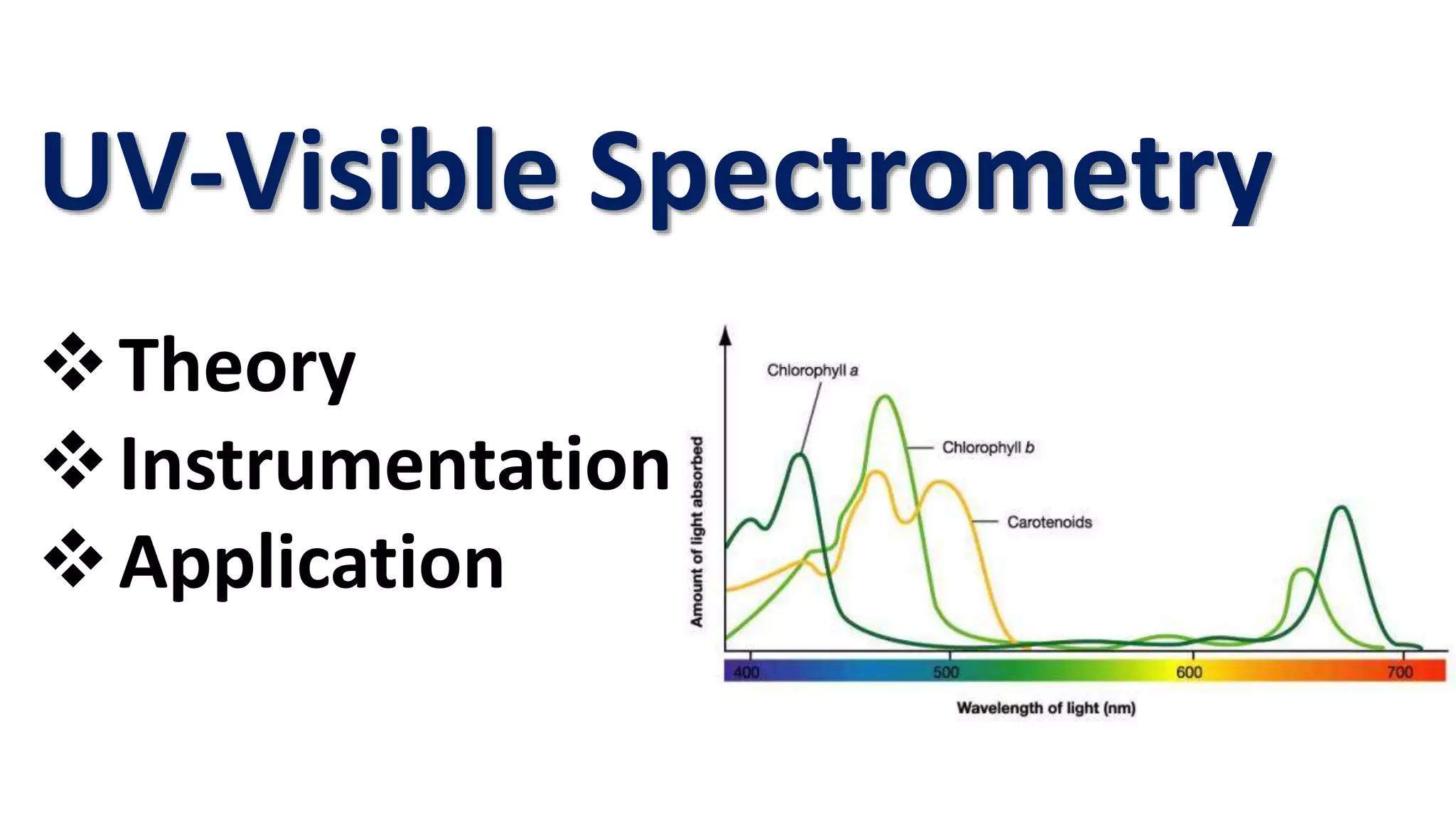UV-Visible Spectrometry is a technique used to analyze how substances interact with electromagnetic radiation in the UV-Visible region. It works based on Beer's Law, where the absorbance of a substance is directly proportional to its concentration and path length. The key components of a UV-Vis spectrometer are a radiation source, monochromator, sample cells, and detectors. It has various applications including structure elucidation, quantitative analysis, detection of impurities, and studying chemical kinetics.






























